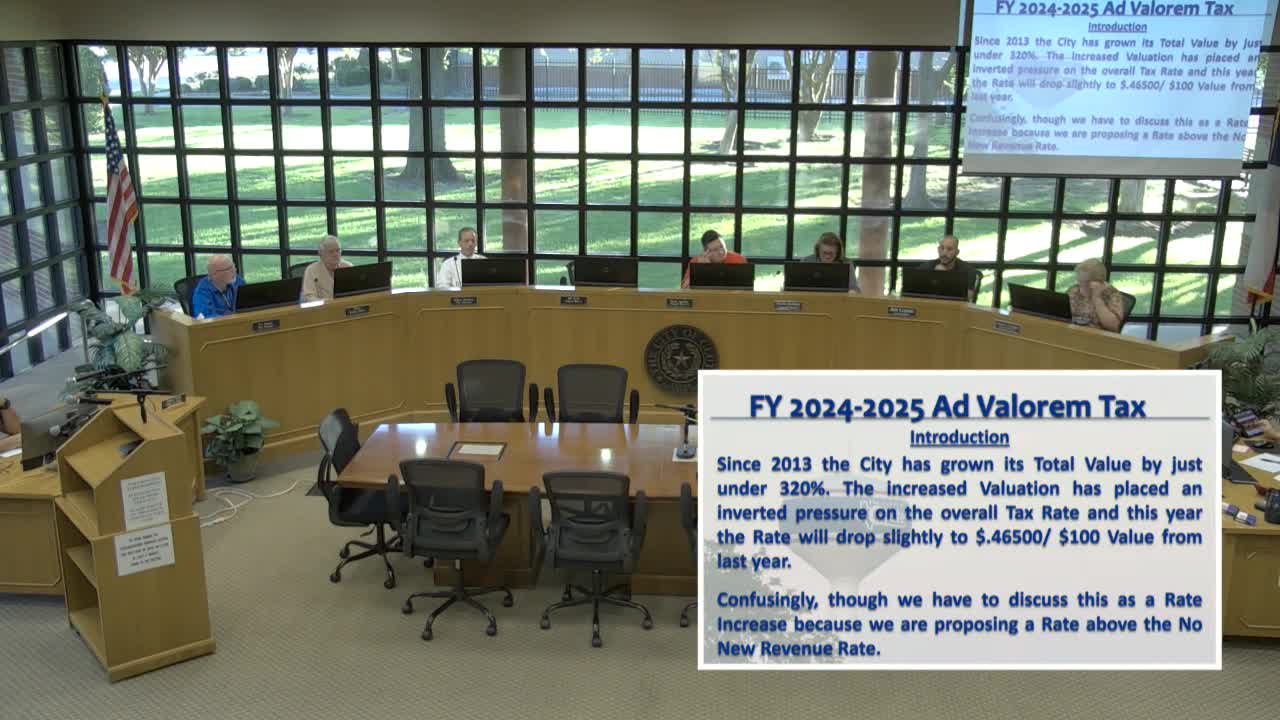City announces tax rate cut amid rising property values
September 12, 2024 | Clute, Brazoria County, Texas
This article was created by AI summarizing key points discussed. AI makes mistakes, so for full details and context, please refer to the video of the full meeting. Please report any errors so we can fix them. Report an error »

In a recent government meeting, city officials announced a reduction in the tax rate from 4.6647 to 4.6500, despite an overall increase in revenue. This paradox arises from significant property value growth, which has surged over 320% since 2014, when the city's total value was just under $400 million. The latest appraisal estimates the city's value at approximately $926 million, leading to a situation where a lower tax rate coincides with higher revenue, prompting state regulations to classify it as a tax increase.
The mayor emphasized that the proposed voter-approved tax rate is the highest permissible without triggering an election, and this year’s rate remains below that threshold. The tax structure consists of two components: the Maintenance and Operations (M&O) rate, which funds city operations, and the Interest and Sinking (INS) levy, which is fixed to service the city’s debt.
For homeowners, the tax burden will vary based on property value. For instance, a home valued at $200,000 will incur a tax of approximately $930 annually, while a $400,000 home will see a tax of around $1,800. The city’s budget for the fiscal year 2024-2025 is projected to raise total property taxes by $2,167,183, or 6.38%, with a portion of this revenue coming from new properties added to the tax rolls.
City officials reiterated the importance of transparency in taxation, clarifying that while the tax rate is decreasing, the overall revenue is increasing due to rising property values. The meeting concluded with a commitment to ensure adequate resources are available to meet public service goals.
The mayor emphasized that the proposed voter-approved tax rate is the highest permissible without triggering an election, and this year’s rate remains below that threshold. The tax structure consists of two components: the Maintenance and Operations (M&O) rate, which funds city operations, and the Interest and Sinking (INS) levy, which is fixed to service the city’s debt.
For homeowners, the tax burden will vary based on property value. For instance, a home valued at $200,000 will incur a tax of approximately $930 annually, while a $400,000 home will see a tax of around $1,800. The city’s budget for the fiscal year 2024-2025 is projected to raise total property taxes by $2,167,183, or 6.38%, with a portion of this revenue coming from new properties added to the tax rolls.
City officials reiterated the importance of transparency in taxation, clarifying that while the tax rate is decreasing, the overall revenue is increasing due to rising property values. The meeting concluded with a commitment to ensure adequate resources are available to meet public service goals.
View full meeting
This article is based on a recent meeting—watch the full video and explore the complete transcript for deeper insights into the discussion.
View full meeting
